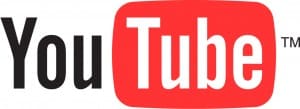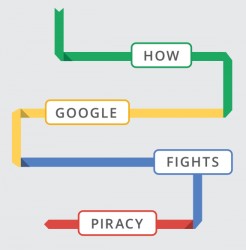Breaking Down YouTube’s New DMCA Policy
 Yesterday, YouTube announced that it is prepared to spend up to $1 million defending four of its users that it feels were subjected to false DMCA complaints.
Yesterday, YouTube announced that it is prepared to spend up to $1 million defending four of its users that it feels were subjected to false DMCA complaints.
The idea is fairly straightforward. In four cases that YouTube has chosen, it believes a user has been hit with DMCA notices for non-infringing content. In those cases, YouTube is refusing to remove the video and offering to cover legal expenses, up to the aforementioned $1 million, should litigation arise.
The new policy has been called a “game-changer” and sign that YouTube is fixing its copyright policies.
However, neither of those things are really true. For all of the headlines that the story has grabbed, it will likely have very minimal impact. That’s because much of the problems with copyright on YouTube are self-made rather than the result of false takedown notices and those problems aren’t going away.
Protection, for a Few
 Right off the bat, the biggest problem with the new policy is that, if you’re YouTube user, it probably doesn’t apply to you.
Right off the bat, the biggest problem with the new policy is that, if you’re YouTube user, it probably doesn’t apply to you.
Currently YouTube has over 800 million active users every month and only 4 of them are gaining any kind of protection. That’s 0.0000005% of all users.
While YouTube has said it may expand the program, it will only be in select cases. While I agree that the cases YouTube has chosen are all indeed likely cases of false DMCA notices, many others exist that aren’t getting protection. For example, on my Garbage Horror review channel, I was hit with a DMCA notice for a video that had no actual content from the TV show we were discussing (audio or video). YouTube is not representing me (though I was able to restore the video with a counter notice).
Granted, my case was likely mistaken identity and not malice, unlike some of these cases, but the point remains, YouTube can not and will not represent all or even most of the people subjected to false DMCA notices, as few as they are.
However, the goal of the effort isn’t to protect all YouTube users, but rather, to discourage the submission of false DMCA notices to YouTube. To stand up in a small number of cases, Google hopes to put others who might file false notices on alert that they are taking a risk.
But that risk isn’t very significant. The $1 million is only protection if the rightsholder sues, which is very unlikely. Especially considering that the DMCA protects YouTube, not the uploader. The rightsholder could, theoretically, sue the user even if YouTube removes the video, they just wouldn’t have a case against YouTube.
The main change for YouTube is that, in these cases, it’s ignoring the DMCA notices and keeping the works online without a counter notice. But this is something YouTube has always had the option of doing and other hosts have taken it farther. For example, Automattic, the company behind WordPress.com, went as far as to sue some who abused the DMCA process.
YouTube’s promise doesn’t amount to much. It only protects a handful of users and only in the unlikely event that they are sued, which, to be clear, could happen regardless of whether the video is taken down or not.
The Bigger Issue
 The bigger issue is that this change doesn’t address YouTube’s much, much larger copyright problem.
The bigger issue is that this change doesn’t address YouTube’s much, much larger copyright problem.
While false DMCA notices get a great deal of press, they are extremely rare, especially considering most videos removed form YouTube aren’t the result of a DMCA notice at all, but rather, Content ID.
Content ID is an automated system implemented by YouTube to match uploaded material to a database of known content. When a match is detected, that content is then either allowed, monetized by the rightsholder or removed depending upon what the creator wanted to do.
However, as we’ve discussed, the Content ID system is far from perfect. The system not only throws back a large number of false positives, causing legitimate videos to be flagged as infringing, it continues to allow truly infringing material to remain on the site.
Still, if you make a fair use of other’s content and your video is taken down, region limited or loses monetization due to a copyright issue, it will almost certainly be Content ID that does it, not a false DMCA notice and nothing is changing with Content ID.
The core of YouTube’s copyright problem remains intact.
Bottom Line
At the end of the day, nothing has really changed with YouTube. The protection it provides is limited in nature and only extended to a small handful of users. Other hosts, such as Automattic, have done far more to stop false DMCA notices.
To be clear, as a regular DMCA notice filer, I despise false DMCA notices. They make my job significantly more difficult and put the entire law in a bad night, no matter how rare they are. I’m in support of nearly anything that can legitimately reduce false DMCA notices.
However, this move is unlikely to do much to stop frivolous DMCA notices since Google isn’t actually filing a lawsuit against the filers (as Automattic did) and, even if they did, the odds they could win a meaningful victory are slim. Sending a false DMCA notice doesn’t carry significant risk other than YouTube possibly ignoring it.
What it may do is discourage frivolous copyright lawsuits over YouTube videos, similar to what happened with the city of Inglewood, but those are even more rare than false DMCA notices.
In short, Google’s new policy protects and exception of an exception of an exception. It does nothing to address their larger copyright issues, either for its users or for outside rightsholders, and probably will not have a drastic impact on false DMCA takedown notices (unless Google starts ignoring them on a larger scale).
Like the Blurred Lines case, this is a copyright story that’s gotten a lot of press, but has little practical impact.
Want to Reuse or Republish this Content?
If you want to feature this article in your site, classroom or elsewhere, just let us know! We usually grant permission within 24 hours.
